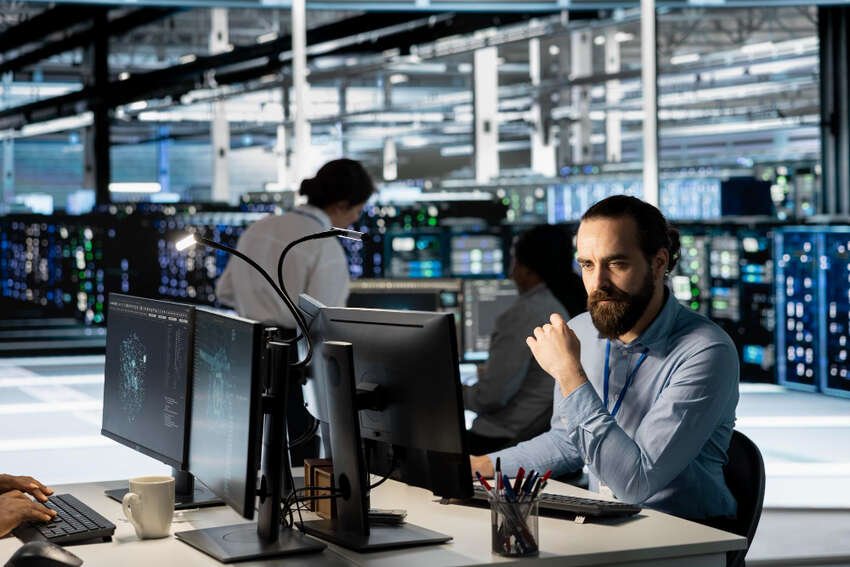VDI is a virtualization technology that helps organizations host their desktop operating systems on a central server. This server delivers the desktop environments over a network to the end-user. This technology enables organizations to secure and control their users’ desktop environments, allowing employees to access their desktops from anywhere, whether they are working from home or on the go.
The entire system to deliver end-user desktop environments through VDI consists of the following elements:
- A central server where desktop operating systems are housed
- A hypervisor that allows many different desktop environments to be run on the central server
- A connection broker that manages the delivery of desktop environments to end-users
- A network protocol that supports the delivery of desktop environments over the network.
Benefits of VDI
There are numerous advantages of using VDI, including:
- Improved security and data protection: By hosting desktop operating systems on a central server, organizations have a far better chance of securing their data and preventing unauthorized access to their systems.
- Easy management and maintenance of desktops: Organizations can maintain and manage their desktop environments using VDI so that the time and effort required to keep their systems up to date are minimized.
- Centralized access to corporate applications and data: With VDI, end users can access corporate applications and data from a centralized location, thus enhancing productivity and collaboration.
- Remote access to desktops for employees working from home or on the go: VDI allows employees to access their desktop environments from anywhere using any device that has access to an internet connection.
Common VDI Use Cases
Application of VDI in several scenarios:
- Offering a secure and managed desktop environment to employees: Organizations can now provision a more secure, managed desktop environment to employee users, which decreases the chances of data breaches and any other security incidents.
- Provisioning virtual desktops to contractors and partners: To enable contractors and partners to access corporate applications and data without having to depend on the organization’s physical systems, VDI can be used to provide virtual desktops.
- Desktop environment management for Bring Your Device (BYOD) initiatives: BYOD can now be supported by VDI, allowing employees to access their desktop environments from personal devices.
Conclusion
Overall, VDI is a really useful technology that lets organizations give their users desktops that are more secure, easier to manage, and flexible. Whether you want to improve how you handle desktops, let your employees work remotely, or boost your security and data protection, VDI is something worth looking into.
Then there’s Virtual Desktop Infrastructure as a Service (VDIaaS), which is a cloud-based service. It brings you all the good things of regular VDI, but in a way that’s easier to scale up or down and more cost-effective. With VDIaaS, the desktops are set up in the cloud and sent to users over the internet whenever they need them.
VDIaaS is a newer approach that has gained significant traction, largely due to the increasing number of people working remotely and the growing emphasis on cloud-based solutions. With VDIaaS, companies can ensure their employees can securely log into their work desktops from virtually any device, regardless of their location worldwide.
Read Dive is a leading technology blog focusing on different domains like Blockchain, AI, Chatbot, Fintech, Health Tech, Software Development and Testing. For guest blogging, please feel free to contact at readdive@gmail.com.





